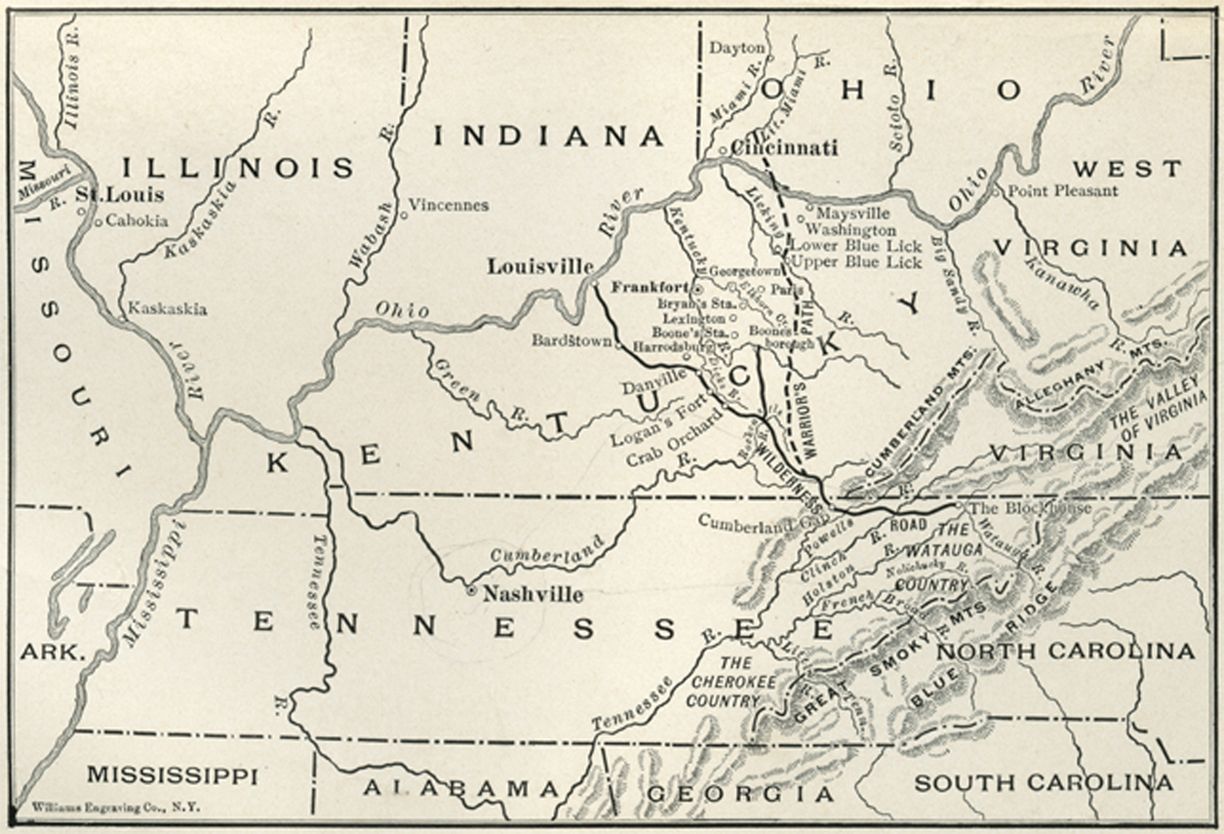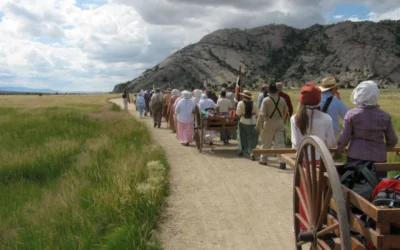In the spring of 1775, Daniel Boone created a path through the Cumberland Gap that would become known as Boone’s Trace and later Wilderness Trail. This path was America’s first gateway to the west, which was Kentucky.
Many of us forget that he not only was following an Indian hunting path, he marked and cleared it as well. It was a job.

Map of the Wilderness Road from Daniel Boone & the Wilderness Road, 1910, Tennessee State Archives Collection
Walking on Daniel Boone’s Trail
In 2015, the Curtis Penix, host of the Daniel Boone Footsteps YouTube channel, spends sixteen days following this same path. He walked from Kingsport, TN, to Fort Boonesborough, KY. He wanted to trace the steps of his pioneer ancestor in 1779.
What an interesting way to make history relevant to people today. Penix’s lyrical narration helps you appreciate the enormity of the task these pioneers endured.
Dr. John Fox, president of Friends of Boone Trace, researched the historic route through five gaps in the mountainous geography. The Friends of Boone Trace website offers Boone Trace maps so you can follow the footsteps by car, bicycle, or on foot.
History of the Cumberland Gap – Gateway to the West
This video, produced by the Cumberland Gap National Historical Park, discusses the history of how the gap’s formation over the centuries. Indians first used the path, but North and South Carolina settlers later used it to cross into Kentucky.
Experience the scenic views from the mountain tops and then explore the lesser known of Kentucky’s caves, Gap Cave. The cave contains engravings from Civil War soldiers.



